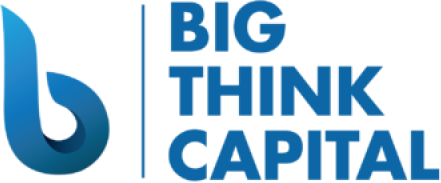Understanding the Impact of the Federal Reserve’s Interest Rate Decisions on Your Small Business Funding Options
Estimated reading time: 5 minutes
- Impact of the Federal Reserve’s interest rate decisions on borrowing costs
- Strategies for safeguarding financial health amid rate fluctuations
- Steps to improve your business credit score
- Choosing the right type of funding in the current economic climate
Table of Contents
- An Overview of Recent Fed Interest Rate Decisions
- How Fed Decisions Affect Different Types of Funding
- Strategies for Safeguarding Your Business’s Financial Health
- Improving Your Business Credit Score in the Current Climate
- Choosing the Right Type of Funding in Light of Interest Rates
- FAQ
An Overview of Recent Fed Interest Rate Decisions
The Federal Reserve, commonly referred to as the Fed, plays a crucial role in regulating the economy through monetary policy. As of early 2025, the Fed has made several key interest rate adjustments in response to economic indicators such as inflation, employment rates, and overall economic growth. Recent trends suggest a delicate balancing act between controlling inflation and supporting economic recovery, particularly post-pandemic.
As of March 2025, the Federal Reserve has maintained interest rates at a moderate level, slightly higher than pre-pandemic rates but lower than exceptional peak levels seen in 2024. These adjustments are critical, as they influence borrowing costs for small business owners like you. Higher interest rates typically lead to increased costs of financing, while lower rates can spur on investment and growth.
How Fed Decisions Affect Different Types of Funding
Understanding how the Fed’s interest rate actions affect specific funding types can help you make strategic choices for your business. Let’s explore the most common funding options and how they can be impacted.
1. SBA Loans
Small Business Administration (SBA) loans are often backed by government guarantees, making them a popular choice for many business owners due to their favorable terms. However, these loans usually come with variable interest rates which can increase as the Fed raises rates. If you’re considering an SBA loan, it is crucial to lock in your rate as soon as possible to minimize your overall costs. Moreover, be prepared for a more extensive application process and time frame, as these loans often require detailed documentation.
2. Working Capital Advances
Working capital advances offer quick access to cash but typically come with higher interest rates than traditional loans. As the Fed raises interest rates, the cost of accessing these advances can increase, putting additional financial strain on your business. If working capital is a primary concern, it’s essential to assess the urgency of your needs against the costs of borrowing.
3. Merchant Cash Advances (MCA)
Merchant cash advances can be a fast solution for businesses needing immediate liquidity, but they are also among the costliest forms of financing. Interest rates and payback percentages may rise in line with Fed hikes. Therefore, it’s important to evaluate alternatives and consider how your sales might support regular cash flow needs against higher repayment costs.
4. Lines of Credit
Business lines of credit are flexible financing options that can adjust with interest rates. When rates fluctuate, so will your borrowing costs. Having a line of credit can be a safeguard for your business, allowing you to access funds as needed without locking in a large amount of debt upfront.
Strategies for Safeguarding Your Business’s Financial Health
Navigating changing interest rates requires proactive management strategies to protect your business and its cash flow. Here are some practical strategies to consider:
- Diversify Funding Sources: Relying on one type of funding can be risky, especially in a fluctuating interest rate environment. Explore a combination of funding options, including SBA loans, lines of credit, and possibly private equity or crowdfunding.
- Consider Prepayment Options: If you choose a loan with a variable rate, look for options that allow you to pay off your loan early without significant penalties. This can help save on interest if rates continue to climb.
- Maintain a Cash Reserve: Establishing a cash reserve can provide a buffer against unforeseen expenses. This can be especially critical in times of economic uncertainty.
- Monitor Financial Indicators: Stay informed about economic trends, market shifts, and potential regulatory changes. Tools like economic calendars allow you to keep track of upcoming Fed meetings that could impact interest rates.
Improving Your Business Credit Score in the Current Climate
A strong business credit score is more crucial than ever when considering financing options, especially amid fluctuating interest rates. Here are several actionable steps to boost your creditworthiness:
- Pay Bills On Time: Establish a pattern of timely payments on existing loans, credit cards, and vendor invoices. This builds trust with lenders and may help improve your credit score.
- Reduce Credit Utilization: Keep your credit utilization ratio below 30% of your total credit limit. Reducing your outstanding debt can improve your credit score and your eligibility for better financing options.
- Review Your Credit Reports: Regularly check your credit reports for inaccuracies. You can obtain free credit reports once a year from major credit bureaus. Dispute any errors that could be negatively affecting your score.
- Diversify Credit Types: Having a mix of credit types – such as installments, credit cards, and lines of credit – can positively impact your credit score, demonstrating responsible credit management.
Choosing the Right Type of Funding in Light of Interest Rates
As you navigate your financing options in light of current interest rates, consider the unique needs and financial health of your business. Here are some considerations for choosing the right funding:
- Evaluate Your Cash Flow Needs: Assess your immediate and long-term capital requirements to determine which type of funding aligns best with your cash flow situation. For short-term needs, working capital advances or lines of credit may be suitable, while long-term growth goals may warrant an SBA loan.
- Analyze the Total Cost of Borrowing: Look beyond interest rates. Consider all associated costs, such as fees, repayment terms, and potential penalties that can add to your total borrowing costs over time.
- Seek Professional Guidance: Consulting with a funding expert can provide personalized insight into the best financing options for your business in the current economic climate. At Big Think Capital, our team is dedicated to helping you navigate these decisions with tailored advice and resources.
FAQ
1. How do interest rate changes affect my business loans?
Interest rate changes directly impact your borrowing costs; higher rates increase loan repayments, while lower rates can reduce them.
2. Should I consider a fixed-rate or variable-rate loan?
It depends on your financial situation and market predictions. Fixed rates offer stability, while variable rates may lead to lower initial costs but come with more risks.
3. What is the best way to prepare for a loan application?
Gather necessary financial documents, check your credit score, and have a clear business plan to present to lenders.
4. How can I improve my chances of getting approved for a loan?
Maintain a good credit score, show consistent revenue, and present a solid business plan to lenders.






